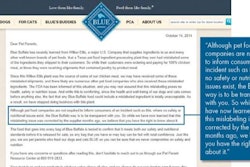After eight years of deliberation and somewhat contentious debate, the revisions to the Association of American Feed Control Officials (AAFCO) Dog and Cat Food Nutrient Profiles have almost made it through all the hoops. Assuming the recommendations of the expert panel (having now passed out of the Pet Food Committee and the Model Bills and Regulations Committee) are accepted by the board and approved by the full AAFCO membership at its annual meeting in August, the revised Profiles will appear in the 2016 AAFCO Official Publication, with an anticipated enforcement grace period of one or two years for new or existing products, respectively. So, if your petfood products are substantiated for nutritional adequacy by means of formulation to meet the Profiles, it is not too early to start thinking about how these revisions may affect them, both in terms of formulation and labeling.
This column discusses the changes to the calcium and phosphorus requirements, as these have the biggest potential impact on products.
The minimum requirements for calcium and phosphorus for cat foods does not change, either for adult maintenance or for growth and reproduction. The ratio of calcium-to-phosphorus for dog foods (there is no ratio for cat foods) remains the same as well, with a minimum of 1:1 and a maximum of 2:1. The minimums for adult maintenance dog foods actually drops slightly, from 0.6% to 0.5% dry matter (DM) for calcium and from 0.5% to 0.4% DM for phosphorus. However, the minimums for dog food intended for growth and reproduction increases from 1.0% DM calcium to 1.2% DM, and 0.8% DM phosphorus to 1.0% DM. So, some companies may have to reformulate their puppy and "all life stages" products to comply with the new requirements.
There are no maximums for calcium or phosphorus established for cat foods at any life stage. Also, the maximum calcium and phosphorus for adult maintenance dog foods, and the maximum phosphorus for dog foods intended for any life stage, do not change. However, the maximum does change very significantly in the case of calcium in foods intended for large-sized puppies.
The current AAFCO Dog Food Nutrient Profiles set a maximum calcium for all dogs, regardless of life stage or size, at 2.5% DM. As proposed in the revisions, though, the maximum calcium allowed in dog foods that may be fed to large-size puppies (greater than 70-pound anticipated adult weight) is limited to no more than 1.8% DM. As a result, any dog food designated for growth or all life stages that is not further designated for smaller dogs only may have to be dramatically reformulated to bring the calcium level down.
Combined with the increase in the minimum calcium and phosphorus for growth and reproduction, there is a much tighter range of calcium levels allowed in dog foods intended for all sizes and life stages, and the maximum calcium-to-phosphorus ratio is effectively reduced to 1.8:1, as well.
Even if a reformulation is not required to bring products into compliance with the new Profiles, all puppy and all life stage dog foods definitely will have to be relabeled. To ensure clarity in compliance with the new calcium level requirements, AAFCO is also promulgating amendments to the Model Regulations with respect to "complete and balanced" claims and to the nutritional adequacy statements. Adult maintenance dogs foods and cat foods for any life stage are unaffected.
However, the nutritional adequacy statement on a dog food label identifying suitability for either "growth" or "all life stages" by formulation to meet the AAFCO Dog Food Nutrient Profiles must now add "including growth of large size dogs (70 lbs. or more as an adult)" at the end of the statement if the maximum calcium is 1.8% or less, or "except for growth of large size dogs (70 lbs. or more as an adult)" if the maximum calcium is greater than 1.8% DM (but still not more than 2.5% DM). Further, unless the maximum calcium of the product is 1.8% DM or less, any "complete and balanced" label claim must be further qualified by adding a life stage and/or size designation, such as "adult dog food" or "for small breed puppies."
Of course, a lot of these reformulation and relabeling headaches go away if the product relies on successful passage of an AAFCO-based feeding trial as the basis for substantiation of nutritional adequacy instead of formulation to meet the Profiles. The same is true for those petfoods substantiated via the product family process, but in that case there's a problem.
Admittedly, as currently written the guidance appears to not only allow, but actually require the calcium level of family members to meet or exceed the level found in the lead product, even when already exceeding the maximum. That's fine when the calcium in the lead product is within the range of or lower than the minimum and maximum. However, let's say for an example, if a lead product contains 3.0% DM calcium, that means anything above it is also automatically acceptable without further feeding trials, be it 3.1, 4.0 or even 5.0% DM. Does that make any sense? Nothing has been done to address this serious discrepancy yet, but hopefully it can be remedied soon.

















